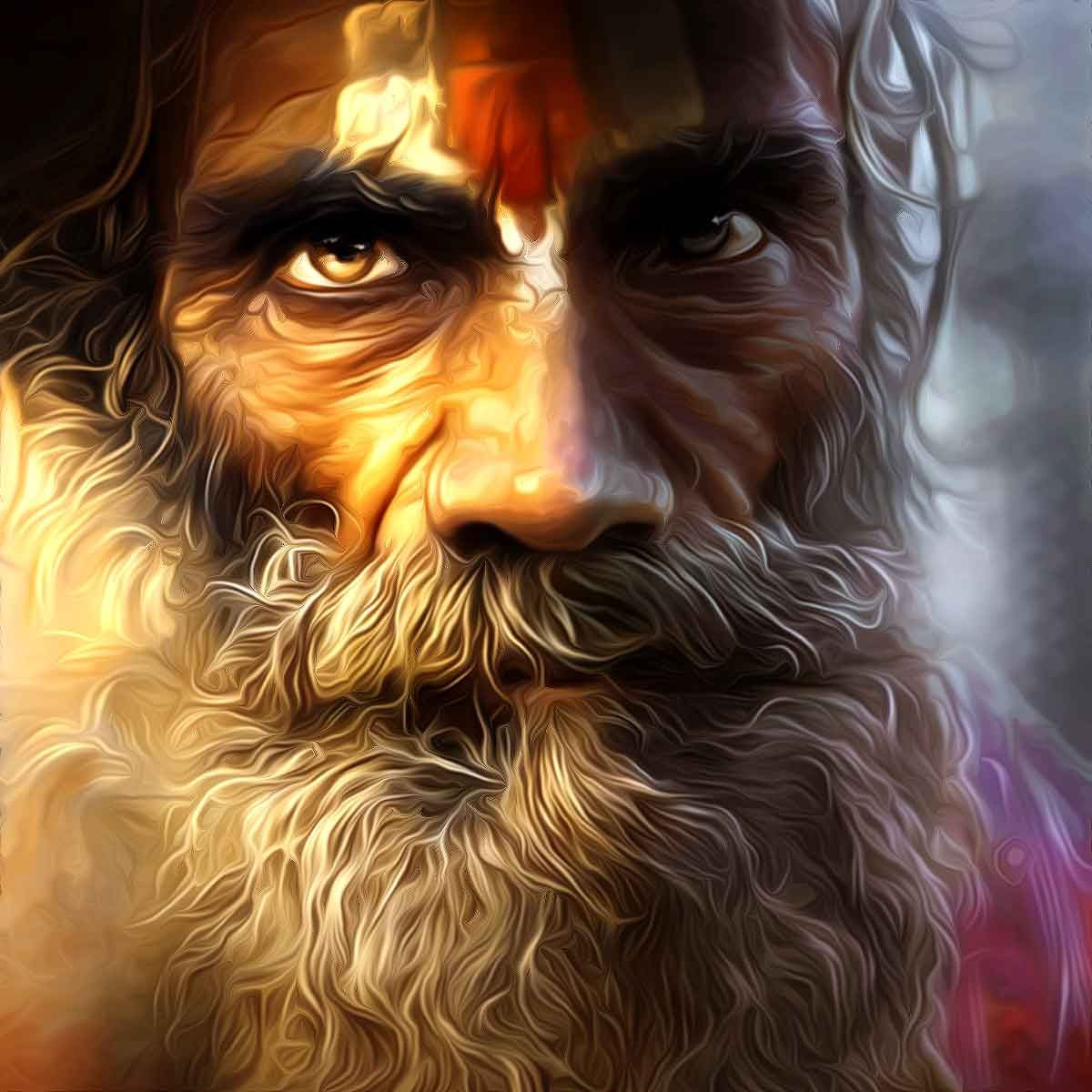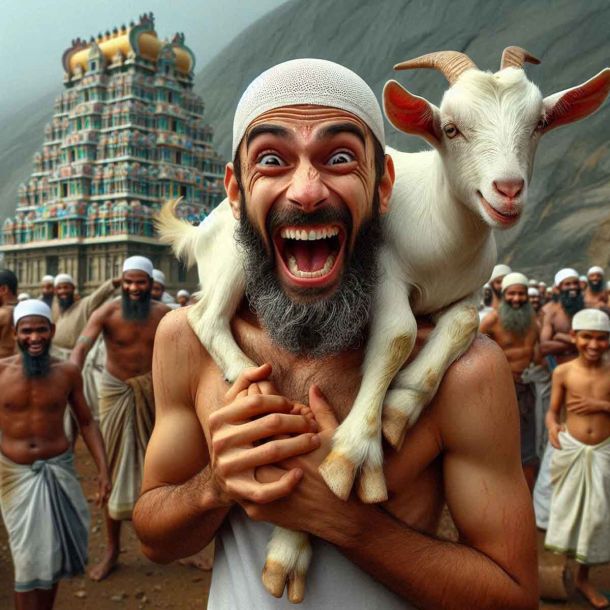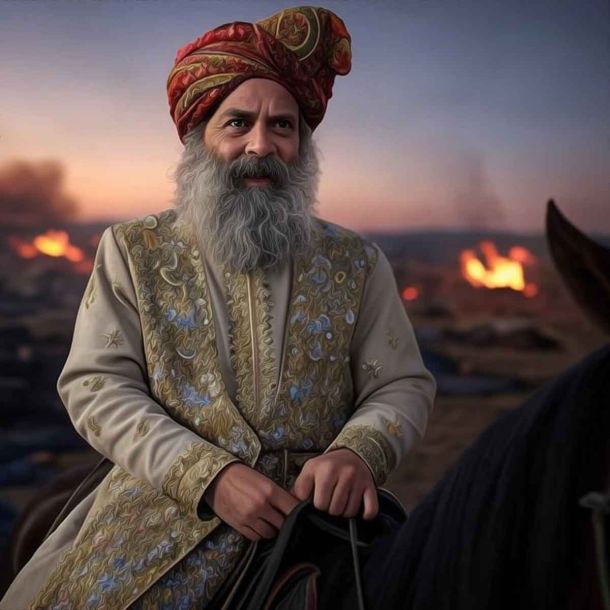More Coverage
Twitter Coverage
Satyaagrah
Written on
Satyaagrah
Written on
Satyaagrah
Written on
Satyaagrah
Written on
Satyaagrah
Written on
Join Satyaagrah Social Media
"Knowledge has to be improved, challenged and increased constantly, or it vanishes": 'Encyclopedia in Sanskrit' to be World’s Biggest Dictionary with over 10 million refs collected from 1500 Sanskrit books including Vedas, Darshana, Polity, Maths & more

"Knowledge has to be improved, challenged and increased constantly, or it vanishes": 'Encyclopedia in Sanskrit ' to be World’s Biggest Dictionary with over 10 million refs collected from 1500 Sanskrit books including Vedas, Darshana, Polity, Maths, and more
Language is the cradle on which civilization grows. Without language, people would not interact on friendly terms, leading to an increase in violent conflicts. Any country wishing to protect its civilizational ethos must begin by doing so with its language. That is why creating a dictionary of Sanskrit holds significant importance for India.
|
Deep research on the Sanskrit lexicon
In 1948, the department of Sanskrit and Lexicography, Deccan College, Pune, started a project called ‘An encyclopedic dictionary of Sanskrit’. Dr. Sumitra Mangesh Katre, a renowned Indologist, and linguist was the leader of the project. Dr. Sumitra also served as the first General editor of the dictionary. Later, Prof. AM Ghatge took on the baton from him.
For the first 25 years of the project, Sanskrit textbooks available in India were hunted. Pandits, shastris, and scholars brainstormed over nearly 1,500 Sanskrit literatures. The domain of these textbooks is spread over 62 knowledge disciplines such as Vedas, Darśana, Sahitya, Dharmaśāstra, Vedānga, Vyakarana, Tantra, Epics, Mathematics, Architecture, Alchemy, Medicine, Veterinary Science, Agriculture, Music, Inscriptions, In-door games, warfare, polity and anthology among others. These textbooks were written in a wide time frame, from the Vedic period to Hāsyārṇava (1850 AD).
|
Clarity about the historical development
Due diligence was followed before publishing the dictionary. In 1976, the first volume of the dictionary was published. The dictionary contains words in alphabetical order. Historic precedents are followed in describing the meaning. Not only does it describe the meaning, but it also provides additional information, references, and context of the respective word. Due care has been taken to arrange words according to the chronological order of their reference in the text.
Any word beginning with a particular letter contains all the citations present in Sanskrit texts. These citations can be as old as thousands of years old and can be as young as a text published 170 years ago. By tracking the development of the meaning of the word across epochs, a learner can understand how language was shaped by the social, cultural, and moral systems of the time.
Sarika Mishra, an Editorial assistant on the project, said, “Sometimes, a word can have anywhere between 20 to 25 meanings as it varies depending on the context of use and books. Once the maximum possible meanings are found, the first draft, called an article, is published. This is then proofread and sent to the General Editor for his first review. Upon finalizing, the article of one word is readied and sent to the press. It is once again proofread by the scholars and the General Editor before it is finalized as a dictionary entry.”
|
Better than Oxford
Up until now, 35 volumes of the coveted dictionary have been published. The process has largely been helped by an exclusive software with a font named KoshaSHRI. 1.25 lakh vocables have been subsumed in these volumes. Apparently, the Sanskrit alphabet ‘अ ‘ has given birth to the highest number of these words. 6,056 pages of the words in the Dictionary start with this particular alphabet only. By the end, of the project will finish, it is expected that it will contain a total vocabulary of 20 lakh words.
For context, the Oxford English Dictionary has 20 volumes and 2,91,500-words entries so far. Given the fact that the Sanskrit language contains 46 letters, 20 more than the number of alphabets in the English dictionary, it won’t be a surprise if the number surpasses more than 20 lakh words.
Example of human endurance
The process was really a painstaking one. These scholars generated a reference slip for each and every small detail. These slips contain the book title, the context of the word, grammatical category, citation, commentary, reference, exact abbreviation, and date of the text. These references have been signed by their creator and have been kept in 3,057 specially designed metal drawers. Around 20 million slips are there and these drawers are now open for the public to see.
The project is a prime example of how human endurance can achieve everything. India has a history of such miracles. The very fact that Nalanda University kept burning for six months is an example of how much effort was put into building it. Let us hope the digitization process of this encyclopedia is not subject to censorship by the big tech.
|
Pune: Rare opportunity to view world’s largest Sanskrit encyclopedia
Pune, 25th September 2022: An Open Day program of ‘An Encyclopaedic Dictionary of Sanskrit on Historical Principles’ was organized on Saturday, 24th September 2022, by the Department of Sanskrit and Lexicography of Deccan College Post-Graduate and Research Institute (Deemed University), Pune.
This program was a golden opportunity for the students, teachers, researchers, and the public to witness the expanse of this huge Encyclopaedic Dictionary of Sanskrit and to understand the working of such a unique project. The program received an overwhelming response of more than 700 registrations and many on-the-spot registrations. People were amazed to see the working of such a monumental Dictionary.
The program was inaugurated by Prof. Pramod Pandey, Vice-Chancellor, and Prof. Prasad Joshi, Pro Vice-Chancellor of Deccan College ( Deemed University). On this occasion, Dr Pandey said that with the emphasis and encouragement of Sanskrit in the New Education Policy, this Encyclopaedic Dictionary of Sanskrit plays a significant role, and it needs to be used by people.
This Open Day program was aimed to introduce this unique Encyclopaedia of Sanskrit to the common public and to demonstrate and promote India’s intellectual heritage hidden in Sanskrit Literature, said Dr Prasad Joshi while welcoming all the visitors.
This Open Day program was organized for the first time after many years to make people aware of such an extraordinary project. An Encyclopaedic Dictionary of Sanskrit is the world’s biggest Dictionary which is an ongoing project at the Department of Sanskrit and Lexicography at Deccan College. Shaped by the vision of Dr Sumitra Katre, a renowned Linguist and Sanskritist, this Dictionary consists of references from 62 knowledge disciplines encoded in the Sanskrit language. From 1943 to 1973, Sanskrit scholars and Shastris from the country extracted millions of words spread over 1500 Sanskrit books. Over 10 million references containing these words from the texts of Vedas, Vedanta, Darsana, Polity, Mathematics, Agriculture, Chemistry, Architecture, Dramaturgy, and many others were collected and stored in the form of slips in the Scriptorium, one of such kind in the country and the world. The participants got a golden opportunity to see the Scriptorium and various slips stored therein.
In 1976, under the editorship of Dr A. M. Ghatge, a distinguished linguist, the first volume of this monumental dictionary was published. So far, 35 volumes of this dictionary spread across 6,000 pages have been published, and the 36th volume is under publication.
Visitors also visited the editorial hall and witnessed the process of dictionary making, the steps involved in the meaning analysis of various words, and the library. On this occasion, all the 35 volumes of this dictionary, along with the other books published by the Department of Sanskrit and Lexicography, were made available to purchase.
Dr Bhav Sharma, the Secretary of the Encyclopaedic Dictionary, conveyed that the dictionary will soon be made available online, and a special website for the Dictionary will be launched soon.
The response from Pune, Sangamner, Satara, Solapur, Mumbai, and Nashik showed love, respect, and curiosity about Sanskrit among the people, said Sanhita Joshi, the Coordinator of the program. The program received positive feedback from visitors from all fields, such as students, teachers, engineers, businessmen, housewives, and others. The program was a success due to the collective efforts of all the Staff of the Dictionary, said Prof. Joshi, who is also the General Editor(I/c) of the Dictionary.
References:
 Support Us
Support Us
Satyagraha was born from the heart of our land, with an undying aim to unveil the true essence of Bharat. It seeks to illuminate the hidden tales of our valiant freedom fighters and the rich chronicles that haven't yet sung their complete melody in the mainstream.
While platforms like NDTV and 'The Wire' effortlessly garner funds under the banner of safeguarding democracy, we at Satyagraha walk a different path. Our strength and resonance come from you. In this journey to weave a stronger Bharat, every little contribution amplifies our voice. Let's come together, contribute as you can, and champion the true spirit of our nation.
 |  |  |
| ICICI Bank of Satyaagrah | Razorpay Bank of Satyaagrah | PayPal Bank of Satyaagrah - For International Payments |
If all above doesn't work, then try the LINK below:
Please share the article on other platforms
DISCLAIMER: The author is solely responsible for the views expressed in this article. The author carries the responsibility for citing and/or licensing of images utilized within the text. The website also frequently uses non-commercial images for representational purposes only in line with the article. We are not responsible for the authenticity of such images. If some images have a copyright issue, we request the person/entity to contact us at This email address is being protected from spambots. You need JavaScript enabled to view it. and we will take the necessary actions to resolve the issue.
Related Articles
- History books should teach India’s civilisational, linguistic heritage, not unfounded claims: Parliamentary Committee meets to discuss NCERT books
- Bhagwad Gita course for corporates is all set to launch at IIM Ahmedabad, will teach management and leadership
- A Different 9/11: How Vivekananda Won Americans’ Hearts and Minds
- Freedom struggle of Gurjars against Britishers at Koonja in 1824: 100s of Gurjars Martyred and 100s Hung in Single Tree
- How Chhatrapati Shivaji Maharaj was establishing Hindu Samrajya by concluding centuries of Islamic oppression - Historian GB Mehandale destroys secular propaganda against Hindu Samrajya Divas
- "Sanskrit is the language of philosophy, science, and religion": A Neuroscientist, James Hartzell explored the "Sanskrit Effect" and MRI scans proved that memorizing ancient mantras increases the size of brain regions associated with cognitive function
- Dangers of losing our identity: Guru Tegh Bahadur forgotten and Aurangzeb being glorified
- "Embrace the light within and discover the boundless expanse of enlightenment": IIT Kanpur, renowned for its remarkable advancements in science and technology embarks on a sacred endeavor to digitize and disseminate Indian philosophical texts, and Vedas
- Our first true war of independence lie forgotten within the fog of time and tomes of propaganda: Sanyasi Rebellion, when "renouncers of the material world" lead peasants in revolt against British and fundamentalist islamic clans
- BHU starts India's first Hindu Studies course with topics on ancient warfare, military strategy, women in military
- "Do your duty unto others. This is the call of time. Ponder over why you have taken birth": Maharshi Vyasa, the author of Mahabharata asked Ganesha to aid him in writing the epic, but Ganesha imposed a condition that Vyasa narrate the story without pause
- Unsung Heroine Pritilata Waddedar, Who Shook The British Raj at the age of 21
- 21-yr-old girl Bina Das shot Bengal Governor in her convocation programme at Calcutta University, got Padma Shri but died in penury
- Fearless female sniper Uda Devi, who etched history during the Siege of Lucknow!
- "विद्या नाम नरस्य कीर्तिरतुला भाग्यक्षये चाश्रयो, धेनुः कामदुधा रतिश्च विरहे नेत्रं तृतीयं च सा": Modi Govt finally tames bureaucracy & recognizes proposal of establishing the Bharatiya Shiksha Board to impart traditional knowledge needed for modern age
























